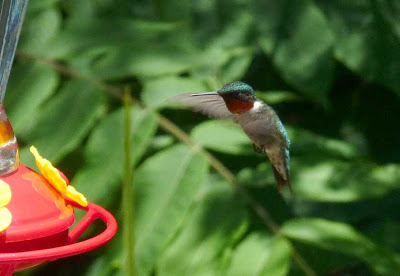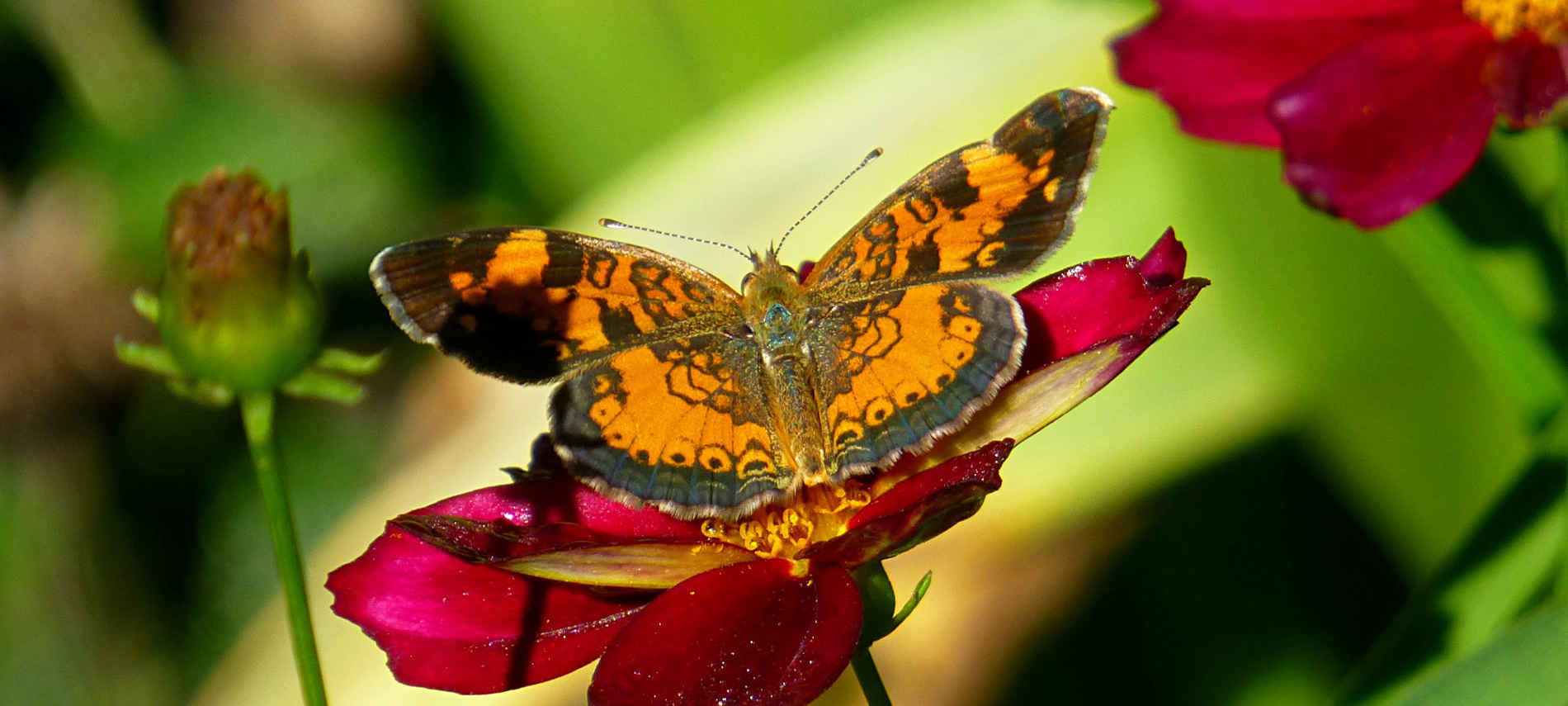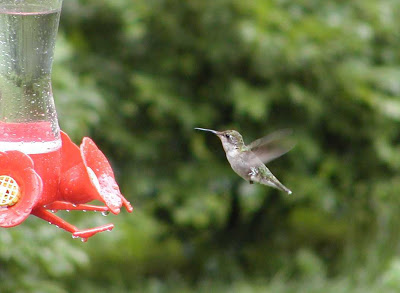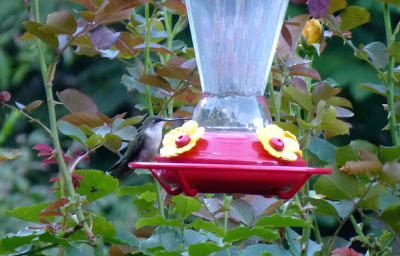 |
| Lovely little hummer at the Inn on Mill Creek |
The speedy little Ruby-throated Hummingbird is our July pick for this year’s 12 Months of Birding at the Inn series on the Inn on Mill Creek blog. The Ruby-throated Hummingbird has the distinct honor of being the eastern United States’ only breeding hummingbird, so if you see your hummers disappear for a few weeks in the summer, no worries, they’re just starting their little families and will be back soon.
You can see hummingbirds usually starting in late April at the Inn, as the hummers migrate north from their winter abodes in Central America. They stick around for the summer, their trips to the hummingbird feeder replaced by trips to the butterfly bushes, bee balm and other nectar-producing flowers. And because red and orange are the Ruby-throated Hummingbirds’ favorite colors, they also adore the native Jewelweed that grows along the edge of the lawn near the creek. When you see this lovely flower in late July/early August, look for hummingbirds to be chattering and buzzing around nearby.
In fall, the Ruby-throated Hummingbird makes its way back south.
The Cornell Lab of Ornithology describes the Ruby-throated Hummingbird this way:
Ruby-throated Hummingbirds are bright emerald or golden-green on the
back and crown, with gray-white underparts. Males have a brilliant
iridescent red throat that looks dark when it’s not in good light.
Cornell also says that the hummingbirds show no particular preference for specific colors of feeders. For the hummer, it’s location, location, location. We put our feeder near the burning bushes by the solarium and they seem to really love that spot. Tree branches hang overhead, so they can zip off and back up into the trees very quickly. Here are few photos of various feeders we’ve had at the Inn:





Our Hummingbirds in Ridgecrest, NC seem territorial. 1 in particular will feed then fly to a nearby branch and chase off any others.
We are right below Ridgecrest and ours are very territorial as well! We have two feeders and a half dozen hummers will fight over a single hole at one feeder, or one will perch himself on top of the shepherd’s hook and refuse to let the others come to the feeders.